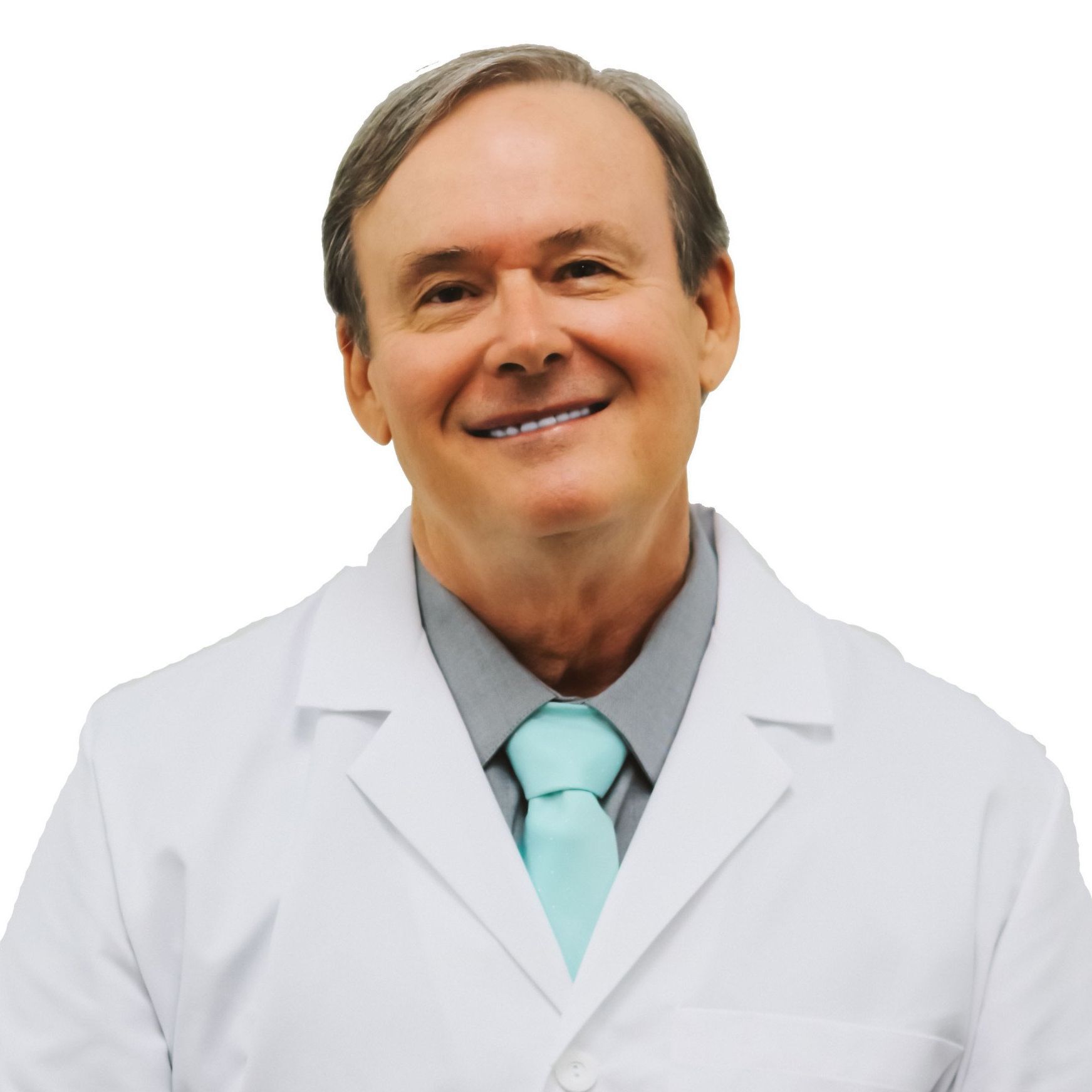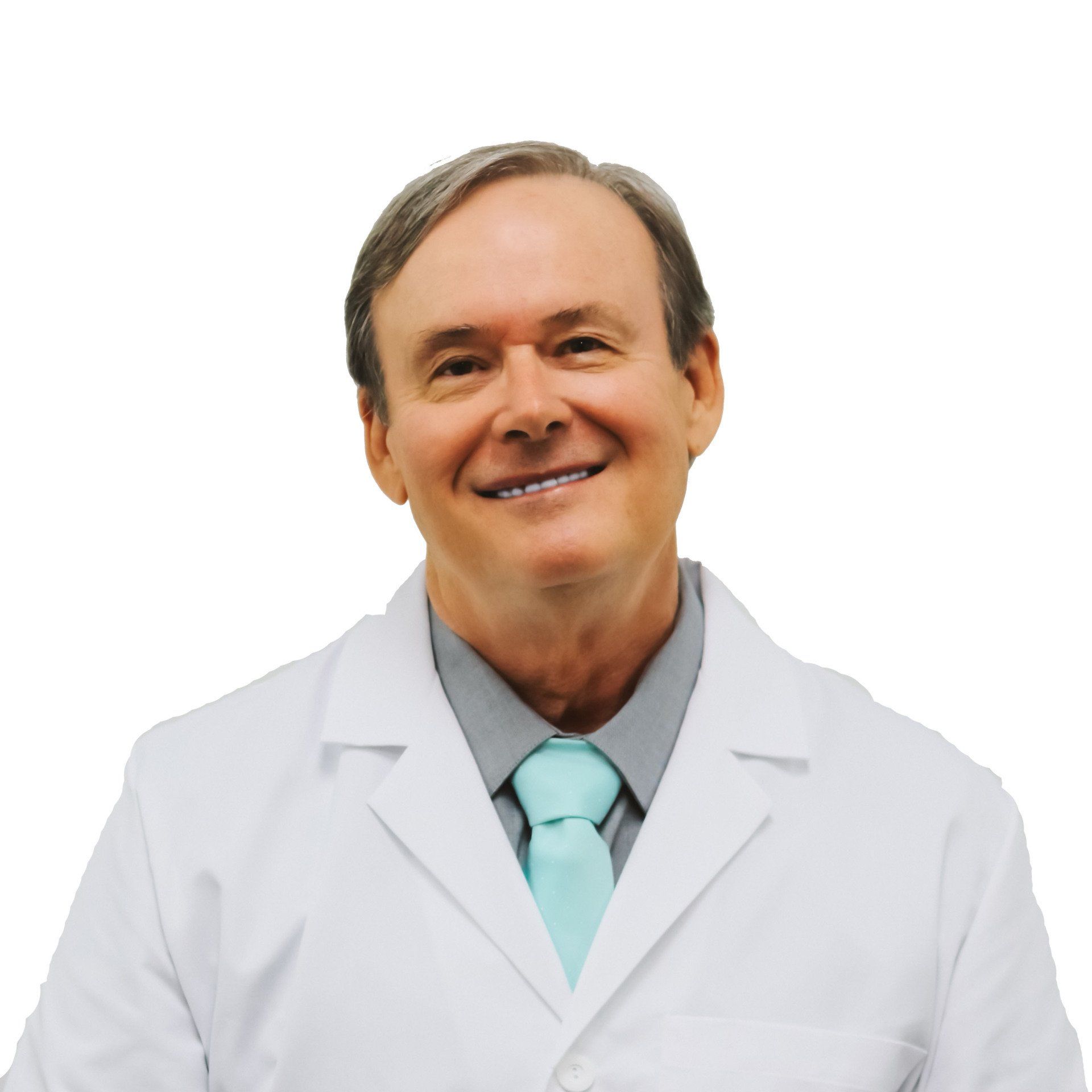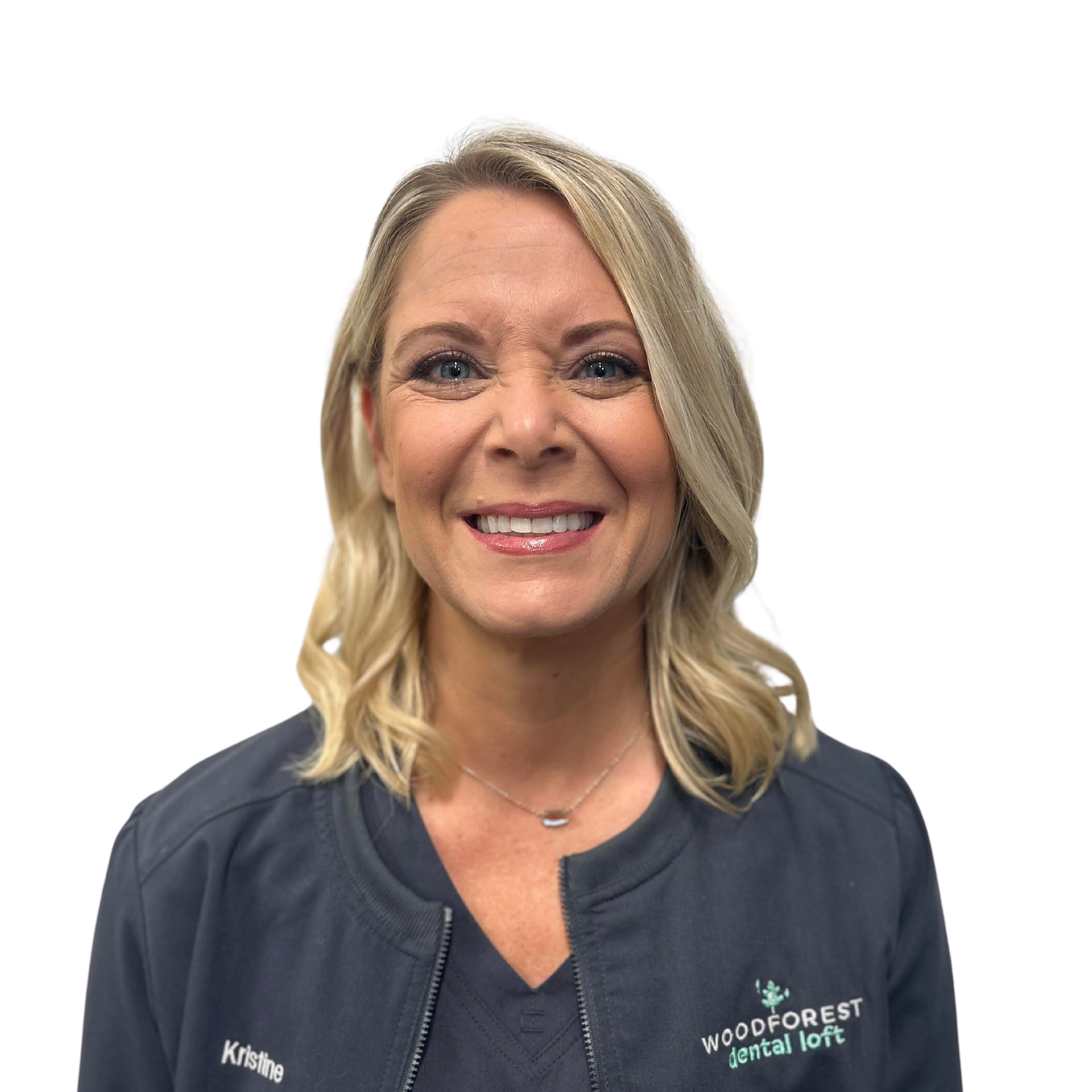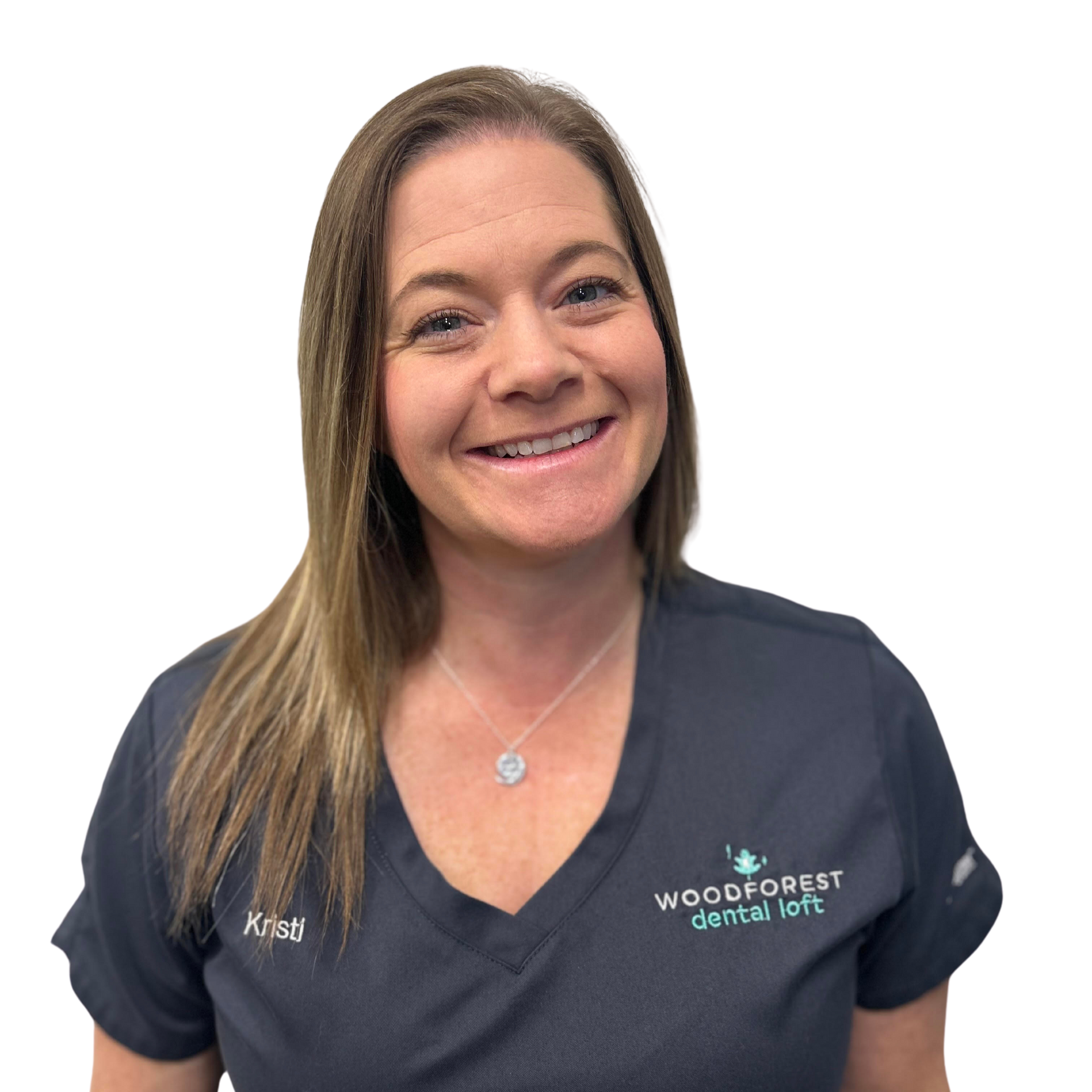About Us
Woodforest Dental Loft has served as the leader and preferred provider of dental services in Montgomery, TX since 2018.
Our experienced staff offer comprehensive dental examinations at our Woodforest office and specialize in a wide array of dental services. We use only the most advanced technology and are committed to improving the quality of life of persons in the Woodforest community through enhanced dental services. Give yourself the gift of a bright smile – schedule an appointment with us today.
Meet Our Doctors

DDS
Hi, I’m Dr Jennifer Hobock. I have loved serving the Woodforest community since 2018. It feels like home here! I’m a 2005 University if Texas graduate and I went to the University of Texas School of Dentistry in Houston for my Doctorate of Dental Surgery.
I love working with my family at Woodforest Dental Loft. My dad is the other dentist and my mom and cousin work at the front desk. I wanted to open a practice that makes our patients feel at home and I think our staff does a great job of that.
When I’m not at work, I love spending time with my two girls - Evelyn and Charlotte, and my fur baby Bailey! I love traveling, reading, and watching the worst TV you can imagine!
I look forward to being your family’s dentist.

DDS FAGD
I’m am a native Houstonian and am in my 43rd year of practicing dentistry. I am a graduate of Abilene Christian University and the University of Texas School of Dentistry in Houston.
I earned my Fellowship in the Academy of General Dentistry in 1991. I continue to stay up to date with the latest techniques by participating in fifty hours of continuing education per year. I have lectured internationally on a variety of dental subjects.
Each year I continue to volunteer at a clinic for underserved people in Honduras. I started the clinic in 1985 and started bringing my daughter, Dr Hobock, when she was in high school.
I am looking forward to working with my daughter, Dr. Hobock in our new family practice!
Texas Dental Association Life Member
Fellow Academy of General Dentistry
Academy of Sports Dentistry
U.S. Olympic Committee National Dental Network

DDS
Hi, I’m Dr Jennifer Hobock. I have loved serving the Woodforest community since 2018. It feels like home here! I’m a 2005 University if Texas graduate and I went to the University of Texas School of Dentistry in Houston for my Doctorate of Dental Surgery.
I love working with my family at Woodforest Dental Loft. My dad is the other dentist and my mom and cousin work at the front desk. I wanted to open a practice that makes our patients feel at home and I think our staff does a great job of that.
When I’m not at work, I love spending time with my two girls - Evelyn and Charlotte, and my furbaby Bailey! I love traveling, reading, and watching the worst TV you can imagine!
I look forward to being your family’s dentist.

DDS FAGD
I’m am a native Houstonian and am in my 43rd year of practicing dentistry. I am a graduate of Abilene Christian University and the University of Texas School of Dentistry in Houston.
I earned my Fellowship in the Academy of General Dentistry in 1991. I continue to stay up to date with the latest techniques by participating in fifty hours of continuing education per year. I have lectured internationally on a variety of dental subjects.
Each year I continue to volunteer at a clinic for underserved people in Honduras. I started the clinic in 1985 and started bringing my daughter, Dr Hobock, when she was in high school.
I am looking forward to working with my daughter, Dr. Hobock in our new family practice!
Texas Dental Association Life Member
Fellow Academy of General Dentistry
Academy of Sports Dentistry
U.S. Olympic Committee National Dental Network
Meet Our Team Members

FRONT OFFICE
Hi, I’m Maelene, I am the wife of Dr Miller, the mother of Dr Hobock , and the grandmother of Evelyn and Charlotte. I will be one of the first people you talk to when you call our office.
I was born and raised in Houston and have been in the dental field since the 90’s. I have a business degree from Sam Houston State University.

FRONT OFFICE
Hi, I'm Cindy, I am part of your amazing front office team. I have over 15 years of front desk medical office experience and I am happy to help you with scheduling appointments & answering any insurance questions you may have.
I moved to Woodforest from Virginia in 2016 with my husband Chris and our daughters, Morgan & Kelli.
Outside of the office I enjoy crafting, traveling, trying different restaurants, and spending time with my family & friends.

FRONT OFFICE
Hi, I’m Leah. I am Dr. Hobock’s cousin and Dr. Miller’s niece. I will be working at the front desk and will do everything I can to help you with your dental needs.
I live in Magnolia with my husband, 3 kids, and 2 dogs. In my spare time I love hanging out with family by the pool and reading. I am so excited to work with you and make you part of our dental family!

FRONT OFFICE
Hi y’all! I’m Alouna Bailey and I am part of Woodforest Dental Lofts phenomenal front office team. I have over 9 years of experience in dental admin. I enjoy building relationships with our patients and educating them on the importance of Oral Hygiene.
I am bonus-mom to 2 wonderful human beings & lover of animals. My partner and I, who reside in Woodforest, have 3 amazing dogs at home. We spend our free time surrounded by those we love, traveling, cooking, gardening and watching true crime tv.

FRONT OFFICE
Hello, my name is Kristine. I am one of the first faces you will see when you come into our office. While I am currently a part-time employee working front desk, I am also a licensed dental assistant. My love for dentistry began my senior year of high school in 1995. My first dental job was in a pediatric dental office, where my love of dentistry and compassion for children intertwined. I continued to grow my dental experience across pediatric, general, cosmetic and Endodontics. In 2011 we moved to Houston from Dallas and I chose to stay at home with my two beautiful daughters. I have been married to my loving husband, Troy for over 16 years and Kaylin is now 24 and married and Kiley is 12 years old and an avid volleyball player. My love of dentistry has allowed me to get right back in and I am so grateful to be at Woodforest Dental Loft. I enjoy making people feel welcomed and comfortable, rather it be front office or hands on dental care I will always strive to give each patient the very best experience.

DENTAL ASSISTANT
Hello, I'm Kristi, I am a dental assistant here at Woodforest Dental loft. I have been assisting since 2002. I am passionate about getting to know our patients and making sure they receive quality care and attention. I live in Magnolia with my 4 amazing kids. My family is my life and I love spending time with them. I go to all my kid's sporting events, love watching true crime, and I am also a foodie and enjoy trying new places.

DENTAL HYGIENIST
Hi, my name is Hannah and I am a Dental Hygienist at Woodforest Dental Loft!
Going to the dentist is a notoriously unpleasant experience for many people, which is why one of my greatest passions as a hygienist is to ensure my patients’ visit is as comfortable and enjoyable as possible.
As a graduate from The University of Texas School of Dentistry at Houston, it’s an absolute joy to use my clinical and educational training to provide each one of my patients with individualized care according to their needs.
Having grown up in Montgomery, TX, I’m excited to give back to my local community in such a practical way.
As a graduate from The University of Texas School of Dentistry at Houston, it’s an absolute joy to use my clinical and educational training to provide each one of my patients with individualized care according to their needs.
Having grown up in Montgomery, TX, I’m excited to give back to my local community in such a practical way.

DENTAL HYGIENIST
Hi, I'm Carmen, one of the dental hygienists at Woodforest Dental Loft. I graduated from Bee County College and have over 30 years of dental experience.
I've worked for Dr. Tom Miller for 25 years and had the privilege of watching Dr. Jennifer Hobock grow from a little girl to a fabulous dentist. It's an honor to be back working with this fantastic dental team.
After all the years in dentistry, I continue to enjoy all the aspects of my job. I strive for a positive dental experience for my patients.
I'm married, a mother of 3 adult children, and a grandmother to two adorable little boys. Outside of work, I enjoy spending time with my husband, children, especially my grandsons, and I enjoy reading every chance I get. I look forward to meeting you at your next dental visit!

DENTAL HYGIENIST
Hi, I'm Leah, one of the hygienists here at Woodforest Dental Loft. I had the pleasure of working with Dr. Miller and Dr. Hobock previously and couldn't resist joining the team here!
I graduated from Coastal Bend College in 2008. With 14 years of experience, my goal is to make your cleaning thorough, pain free, and educational. I want to give you the tips and tools to help you create healthy habits that work for you!
When I'm not working I love to hang out with my husband, daughter and 2 dogs. I spend a lot of time DIYing projects around the house. My family loves to travel and I love being in the mountains.

DENTAL HYGIENIST
Hi, my name is Meagan and I am one of the dental hygienists here at Woodforest Dental Loft. My goal as a hygienist is to provide exceptional care while creating a warm, comfortable, and positive environment. Helping others achieve their oral hygiene goals and walk away with a boosted mood and a smile are my favorite parts of dentistry. Caring for people has been a lifelong passion. I graduated with my B.A. in Psychology from Texas A&M in 2013 and in 2020 I received my license and B.S. in Dental Hygiene from the University of Texas. I have experience working with diverse groups from all walks of life, ages, and backgrounds. Patience and flexibility are my superpowers. I love getting to know my Woodforest community! My husband, Chris, and I moved to the neighborhood in 2022. In our spare time we are either taking our dog Leo to the park, spending time with close friends/family, or working out at the gym. Come and see me for your next dental cleaning and check up. I cant wait to hear your story and make your gums and heart happy!
FAQ
- How often should I brush and floss?
Brushing and flossing help control the plaque and bacteria that cause dental disease.
Plaque is a film of food debris, bacteria, and saliva that sticks to the teeth and gums. The bacteria in plaque convert certain food particles into acids that cause tooth decay. Also, if plaque is not removed, it turns into calculus (tartar). If plaque and calculus are not removed, they begin to destroy the gums and bone, causing periodontal (gum) disease.
Plaque formation and growth is continuous and can only be controlled by regular brushing, flossing, and the use of other dental aids.
Toothbrushing – Brush your teeth at least twice a day (especially before going to bed at night) with an ADA approved soft bristle brush and toothpaste.
- Brush at a 45 degree angle to the gums, gently using a small, circular motion, ensuring that you always feel the bristles on the gums.
- Brush the outer, inner, and biting surfaces of each tooth.
- Use the tip of the brush head to clean the inside front teeth.
- Brush your tongue to remove bacteria and freshen your breath.
Electric toothbrushes are also recommended. They are easy to use and can remove plaque efficiently. Simply place the bristles of the electric brush on your gums and teeth and allow the brush to do its job, several teeth at a time.
Flossing – Daily flossing is the best way to clean between the teeth and under the gumline. Flossing not only helps clean these spaces, it disrupts plaque colonies from building up, preventing damage to the gums, teeth, and bone.
- Take 12-16 inches (30-40cm) of dental floss and wrap it around your middle fingers, leaving about 2 inches (5cm) of floss between the hands.
- Using your thumbs and forefingers to guide the floss, gently insert the floss between teeth using a sawing motion.
- Curve the floss into a “C” shape around each tooth and under the gumline. Gently move the floss up and down, cleaning the side of each tooth.
Floss holders are recommended if you have difficulty using conventional floss.
Rinsing – It is important to rinse your mouth with water after brushing, and also after meals if you are unable to brush. If you are using an over-the-counter product for rinsing, it’s a good idea to consult with your dentist or dental hygienist on its appropriateness for you.
- How often should I have a dental exam and cleaning?
You should have your teeth checked and cleaned at least twice a year, though your dentist or dental hygienist may recommend more frequent visits.
Regular dental exams and cleaning visits are essential in preventing dental problems and maintaining the health of your teeth and gums. At these visits, your teeth are cleaned and checked for cavities. Additionally, there are many other things that are checked and monitored to help detect, prevent, and maintain your dental health. These include:
- Medical history review: Knowing the status of any current medical conditions, new medications, and illnesses, gives us insight to your overall health and also your dental health.
- Examination of diagnostic x-rays (radiographs): Essential for detection of decay, tumors, cysts, and bone loss. X-rays also help determine tooth and root positions.
- Oral cancer screening: Check the face, neck, lips, tongue, throat, tissues, and gums for any signs of oral cancer.
- Gum disease evaluation: Check the gums and bone around the teeth for any signs of periodontal disease.
- Examination of tooth decay: All tooth surfaces will be checked for decay with special dental instruments.
- Examination of existing restorations: Check current fillings, crowns, etc.
- Removal of calculus (tartar): Calculus is hardened plaque that has been left on the tooth for sometime and is now firmly attached to the tooth surface. Calculus forms above and below the gum line, and can only be removed with special dental instruments.
- Removal of plaque: Plaque is a sticky, almost invisible film that forms on the teeth. It is a growing colony of living bacteria, food debris, and saliva. The bacteria produce toxins (poisons) that inflame the gums. This inflammation is the start of periodontal disease!
- Teeth polishing: Removes stain and plaque that is not otherwise removed during toothbrushing and scaling.
- Oral hygiene recommendations: Review and recommend oral hygiene aids as needed (electric dental toothbrushes, special cleaning aids, fluorides, rinses, etc.).
- Review dietary habits: Your eating habits play a very important role in your dental health.
As you can see, a good dental exam and cleaning involves quite a lot more than just checking for cavities and polishing your teeth. We are committed to providing you with the best possible care, and to do so will require regular check-ups and cleanings.
- What should I do if I have bad breath?
Bad breath (halitosis) can be an unpleasant and embarrassing condition. Many of us may not realize that we have bad breath, but everyone has it from time to time, especially in the morning.
There are various reasons one may have bad breath, but in healthy people, the major reason is due to microbial deposits on the tongue, especially the back of the tongue. Some studies have shown that simply brushing the tongue reduced bad breath by as much as 70 percent.
What may cause bad breath?
- Morning time – Saliva flow almost stops during sleep and its reduced cleansing action allows bacteria to grow, causing bad breath.
- Certain foods – Garlic, onions, etc. Foods containing odor-causing compounds enter the blood stream; they are transferred to the lungs, where they are exhaled.
- Poor oral hygiene habits – Food particles remaining in the mouth promote bacterial growth.
- Periodontal (gum) disease – Colonies of bacteria and food debris residing under inflamed gums.
- Dental cavities and improperly fitted dental appliances – May also contribute to bad breath.
- Dry mouth (Xerostomia) – May be caused by certain medications, salivary gland problems, or continuous mouth breathing.
- Tobacco products – Dry the mouth, causing bad breath.
- Dieting – Certain chemicals called ketones are released in the breath as the body burns fat.
- Dehydration, hunger, and missed meals – Drinking water and chewing food increases saliva flow and washes bacteria away.
- Certain medical conditions and illnesses – Diabetes, liver and kidney problems, chronic sinus infections, bronchitis, and pneumonia are several conditions that may contribute to bad breath.
Keeping a record of what you eat may help identify the cause of bad breath. Also, review your current medications, recent surgeries, or illnesses with your dentist.
What can I do to prevent bad breath?
- Practice good oral hygiene – Brush at least twice a day with an ADA approved fluoride toothpaste and toothbrush. Floss daily to remove food debris and plaque from in between the teeth and under the gumline. Brush or use a tongue scraper to clean the tongue and reach the back areas. Replace your toothbrush every 2 to 3 months. If you wear dentures or removable bridges, clean them thoroughly and place them back in your mouth in the morning.
- See your dentist regularly – Get a check-up and cleaning at least twice a year. If you have or have had periodontal disease, your dentist will recommend more frequent visits.
- Stop smoking/chewing tobacco – Ask your dentist what they recommend to help break the habit.
- Drink water frequently – Water will help keep your mouth moist and wash away bacteria.
- Use mouthwash/rinses – Some over-the-counter products only provide a temporary solution to mask unpleasant mouth odor. Ask your dentist about antiseptic rinses that not only alleviate bad breath, but also kill the germs that cause the problem.
In most cases, your dentist can treat the cause of bad breath. If it is determined that your mouth is healthy, but bad breath is persistent, your dentist may refer you to your physician to determine the cause of the odor and an appropriate treatment plan.
- Why is it important to use dental floss?
Brushing our teeth removes food particles, plaque, and bacteria from all tooth surfaces, except in between the teeth. Unfortunately, our toothbrush can’t reach these areas that are highly susceptible to decay and periodontal (gum) disease.
Daily flossing is the best way to clean between the teeth and under the gumline. Flossing not only helps clean these spaces, it disrupts plaque colonies from building up, preventing damage to the gums, teeth, and bone.
Plaque is a sticky, almost invisible film that forms on the teeth. It is a growing colony of living bacteria, food debris, and saliva. The bacteria produce toxins (acids) that cause cavities and irritate and inflame the gums. Also, when plaque is not removed above and below the gumline, it hardens and turns into calculus (tartar). This will further irritate and inflame the gums and also slowly destroy the bone. This is the beginning of periodontal disease.
How to floss properly:
- Take 12-16 inches (30-40cm) of dental floss and wrap it around your middle fingers, leaving about 2 inches (5cm) of floss between the hands.
- Using your thumbs and forefingers to guide the floss, gently insert the floss between teeth using a sawing motion.
- Curve the floss into a “C” shape around each tooth and under the gumline. Gently move the floss up and down, cleaning the side of each tooth.
Floss holders are recommended if you have difficulty using conventional floss.
Daily flossing will help you keep a healthy, beautiful smile for life!
- How can I tell if I have gingivitis or periodontitis (gum disease)?
Four out of five people have periodontal disease and don’t know it! Most people are not aware of it because the disease is usually painless in the early stages. Unlike tooth decay, which often causes discomfort, it is possible to have periodontal disease without noticeable symptoms. Having regular dental check-ups and periodontal examinations are very important and will help detect if periodontal problems exist.
Periodontal disease begins when plaque, a sticky, colorless, film of bacteria, food debris, and saliva, is left on the teeth and gums. The bacteria produce toxins (acids) that inflame the gums and slowly destroy the bone. Brushing and flossing regularly and properly will ensure that plaque is not left behind to do its damage.
Other than poor oral hygiene, there are several other factors that may increase the risk of developing periodontal disease:
- Smoking or chewing tobacco – Tobacco users are more likely than nonusers to form plaque and tartar on their teeth.
- Certain tooth or appliance conditions – Bridges that no longer fit properly, crowded teeth, or defective fillings that may trap plaque and bacteria.
- Many medications – Steroids, cancer therapy drugs, blood pressure meds, oral contraceptives. Some medications have side affects that reduce saliva, making the mouth dry and plaque easier to adhere to the teeth and gums.
- Pregnancy, oral contraceptives, and puberty – Can cause changes in hormone levels, causing gum tissue to become more sensitive to bacteria toxins.
- Systemic diseases – Diabetes, blood cell disorders, HIV / AIDS, etc.
- Genetics may play role – Some patients may be predisposed to a more aggressive type of periodontitis. Patients with a family history of tooth loss should pay particular attention to their gums.
Signs and Symptoms of Periodontal Disease
- Red and puffy gums – Gums should never be red or swollen.
- Bleeding gums – Gums should never bleed, even when you brush vigorously or use dental floss.
- Persistent bad breath – Caused by bacteria in the mouth.
- New spacing between teeth – Caused by bone loss.
- Loose teeth – Also caused by bone loss or weakened periodontal fibers (fibers that support the tooth to the bone).
- Pus around the teeth and gums – Sign that there is an infection present.
- Receding gums – Loss of gum around a tooth.
- Tenderness or Discomfort – Plaque, calculus, and bacteria irritate the gums and teeth.
Good oral hygiene, a balanced diet, and regular dental visits can help reduce your risk of developing periodontal disease.
- What does heart disease and other medical conditions have to do with periodontal (gum) disease?
Many people are unaware that having periodontal disease (the destruction of gum tissue and bone that hold our teeth in place) can affect your overall health. Periodontal disease is one of the most common infections; often more prevalent than the common cold! Periodontal disease is not only the number one reason people lose teeth; it can also affect the health of your body!
Periodontal disease is a bacterial infection, and in its earliest stages, it’s called gingivitis. It starts when an accumulation of plaque (a colony of bacteria, food debris, and saliva) is NOT regularly removed from the gums and teeth. The bacteria in plaque produce toxins/acids that irritate and infect the gums and eventually destroy the jaw bone that supports the teeth. When periodontal disease is not treated it can eventually lead to tooth loss!
There are numerous studies that have looked into the correlation between gum disease and major medical conditions. These studies suggest people with periodontal disease are at a greater risk of systemic disease and indicate that periodontal disease may cause oral bacteria to enter the bloodstream and travel to major organs and begin new infections. Research suggests that periodontal bacteria in the blood stream may:
- Contribute to the development of heart disease
- Increase the risk of stroke
- Compromise the health of those that have diabetes or respiratory diseases
- Increase a woman’s risk of having a preterm, low-birth weight baby
Researchers conclude there is still much research to be done to understand the link between periodontal disease and systemic diseases, but enough research has been done to support that infections in the mouth can play havoc elsewhere in the body.
To ensure a healthy, disease-free mouth, we recommend the importance of regular dental check-ups and cleanings, which include a periodontal evaluation. Also, diligent home care and a proper diet can help reduce the plaque and bacteria in the mouth.
Remember….the mouth body connection! Taking care of your oral health may contribute to your overall medical health!
- Are amalgam (silver) fillings safe?
Over the years there has been some concern as to the safety of amalgam (silver) fillings. An amalgam is a blend of copper, silver, tin and zinc, bound by elemental mercury. Dentists have used this blended metal to fill teeth for more than 100 years. The controversy is due to claims that the exposure to the vapor and minute particles from the mercury can cause a variety of health problems.
According to the American Dental Association (ADA), up to 76% of dentists use silver containing mercury to fill teeth. The ADA also states that silver fillings are safe and that studies have failed to find any link between silver containing mercury and any medical disorder.
The general consensus is that amalgam (silver) fillings are safe. Along with the ADA’s position, the Center for Disease Control (CDC), the World Health Organization, the FDA, and others support the use of silver fillings as safe, durable, and cost effective. The U.S. Public Health Service says that the only reason not to use silver fillings is when a patient has an allergy to any component of this type of filling. The ADA has had fewer than 100 reported incidents of an allergy to components of silver fillings, and this is out of countless millions of silver fillings over the decades.
Although studies indicate that there are no measurable health risks to patients who have silver fillings, we do know that mercury is a toxic material when we are exposed at high, unsafe levels. For instance, we have been warned to limit the consumption of certain types of fish that carry high levels of mercury in them. However, with respect to amalgam fillings, the ADA maintains that when the mercury combines with the other components of the filling, it becomes an inactive substance that is safe.
There are numerous options to silver fillings, including composite (tooth-colored), porcelain, and gold fillings. We encourage you to discuss these options with your dentist so you can determine which is the best option for you.
- How can cosmetic dentistry help improve the appearance of my smile?
If you’re feeling somewhat self-conscious about your teeth, or just want to improve your smile, cosmetic dental treatments may be the answer to a more beautiful, confident smile.
Cosmetic dentistry has become very popular in the last several years, not only due to the many advances in cosmetic dental procedures and materials available today, but also because patients are becoming more and more focused on improving their overall health. This includes dental prevention and having a healthier, whiter, more radiant smile.
There are many cosmetic dental procedures available to improve your teeth and enhance your smile. Depending on your particular needs, cosmetic dental treatments can change your smile dramatically, from restoring a single tooth to having a full mouth make-over. Ask your dentist how you can improve the health and beauty of your smile with cosmetic dentistry.
Cosmetic Procedures:
Teeth Whitening: Bleaching lightens teeth that have been stained or discolored by age, food, drink, and smoking. Teeth darkened as a result of injury or taking certain medications can also be bleached, but the effectiveness depends on the degree of staining present.
Composite (tooth-colored) Fillings: Also known as “bonding”, composite fillings are now widely used instead of amalgam (silver) fillings to repair teeth with cavities, and also to replace old defective fillings. Tooth-colored fillings are also used to repair chipped, broken, or discolored teeth. This type of filling is also very useful to fill in gaps and to protect sensitive, exposed root surfaces caused by gum recession.
Porcelain Veneers: Veneers are thin custom-made, tooth-colored shells that are bonded onto the fronts of teeth to create a beautiful individual smile. They can help restore or camouflage damaged, discolored, poorly shaped, or misaligned teeth. Unlike crowns, veneers require minimal tooth structure to be removed from the surface of the tooth.
Porcelain Crowns (caps): A crown is a tooth-colored, custom-made covering that encases the entire tooth surface restoring it to its original shape and size. Crowns protect and strengthen teeth that cannot be restored with fillings or other types of restorations. They are ideal for teeth that have large, fractured or broken fillings and also for those that are badly decayed.
Dental Implants: Dental implants are artificial roots that are surgically placed into the jaw to replace one or more missing teeth. Porcelain crowns, bridges, and dentures can be made specifically to fit and attach to implants, giving a patient a strong, stable, and durable solution to removable dental appliances.
Orthodontics: Less visible and more effective brackets and wires are making straightening teeth with orthodontics much more appealing to adult patients. Also, in some cases, teeth may be straightened with custom-made, clear, removable aligners that require no braces.
Thanks to the advances in modern dentistry, cosmetic treatments can make a difference in making your smile shine!
- What can I do about stained or discolored teeth?
Since teeth whitening has now become the number one aesthetic concern of many patients, there are many products and methods available to achieve a brighter smile.
Professional teeth whitening (or bleaching) is a simple, non-invasive dental treatment used to change the color of natural tooth enamel, and is an ideal way to enhance the beauty of your smile. Over-the-counter products are also available, but they are much less effective than professional treatments and may not be approved by the American Dental Association (ADA).
As we age, the outer layer of tooth enamel wears away, eventually revealing a darker or yellow shade. The color of our teeth also comes from the inside of the tooth, which may become darker over time. Smoking, drinking coffee, tea, and wine may also contribute to tooth discoloration, making our teeth yellow and dull. Sometimes, teeth can become discolored from taking certain medications as a child, such as tetracycline. Excessive fluoridation (fluorosis) during tooth development can also cause teeth to become discolored.
It’s important to have your teeth evaluated by your dentist to determine if you’re a good candidate for bleaching. Occasionally, tetracycline and fluorosis stains are difficult to bleach and your dentist may offer other options, such as veneers or crowns to cover up such stains. Since teeth whitening only works on natural tooth enamel, it is also important to evaluate replacement of any old fillings, crowns, etc. before bleaching begins. Once the bleaching is done, your dentist can match the new restorations to the shade of the newly whitened teeth.
Since teeth whitening is not permanent, a touch-up may be needed every several years to keep your smile looking bright.
The most widely used professional teeth whitening systems:
Home teeth whitening systems: At-home products usually come in a gel form that is placed in a custom-fitted mouthguard (tray), created from a mold of your teeth. The trays are worn either twice a day for approximately 30 minutes, or overnight while you sleep. It usually takes several weeks to achieve the desired results depending on the degree of staining and the desired level of whitening.
In office teeth whitening: This treatment is done in the dental office and you will see results immediately. It may require more than one visit, with each visit lasting 30 to 60 minutes. While your gums are protected, a bleaching solution is applied to the teeth. A special light may be used to enhance the action of the agent while the teeth are whitened.
Some patients may experience tooth sensitivity after having their teeth whitened. This sensation is temporary and subsides shortly after you complete the bleaching process, usually within a few days to one week.
Teeth whitening can be very effective and can give you a brighter, whiter, more confident smile!
- What are porcelain veneers and how can they improve my smile?
Porcelain veneers are very thin shells of tooth-shaped porcelain that are individually crafted to cover the fronts of teeth. They are very durable and will not stain, making them a very popular solution for those seeking to restore or enhance the beauty of their smile.
Veneers may be used to restore or correct the following dental conditions:
- Severely discolored or stained teeth
- Unwanted or uneven spaces
- Worn or chipped teeth
- Slight tooth crowding
- Misshapen teeth
- Teeth that are too small or large
Getting veneers usually requires two visits. Veneers are created from an impression (mold) of your teeth that is then sent to a professional dental laboratory where each veneer is custom-made (for shape and color) for your individual smile.
With little or no anesthesia, teeth are prepared by lightly buffing and shaping the front surface of the teeth to allow for the small thickness of veneers. The veneers are carefully fitted and bonded onto the tooth surface with special bonding cements and occasionally a specialized light may be used to harden and set the bond.
Veneers are an excellent dental treatment that can dramatically improve your teeth and give you a natural, beautiful smile.
- What should I do if a tooth is knocked out?
We’re all at risk for having a tooth knocked out. More than 5 million teeth are knocked out every year! If we know how to handle this emergency situation, we may be able to actually save the tooth. Teeth that are knocked out may be possibly reimplanted if we act quickly, yet calmly, and follow these simple steps:
1. Locate the tooth and handle it only by the crown (chewing part of the tooth), NOT by the roots.
2. DO NOT scrub or use soap or chemicals to clean the tooth. If it has dirt or debris on it, rinse it gently with your own saliva or whole milk. If that is not possible, rinse it very gently with water.
3. Get to a dentist within 30 minutes. The longer you wait, the less chance there is for successful reimplantation.
Ways to Transport the Tooth
- Try to replace the tooth back in its socket immediately. Gently bite down on gauze, a wet tea bag or on your own teeth to keep the tooth in place. Apply a cold compress to the mouth for pain and swelling as needed.
- If the tooth cannot be placed back into the socket, place the tooth in a container and cover with a small amount of your saliva or whole milk. You can also place the tooth under your tongue or between your lower lip and gums. Keep the tooth moist at all times. Do not transport the tooth in a tissue or cloth.
- Consider buying a “Save-A-Tooth” storage container and keeping it as part of your home first aid kit. The kit is available in many pharmacies and contains a travel case and fluid solution for easy tooth transport.
The sooner the tooth is replaced back into the socket, the greater the likelihood it has to survive and possibly last for many years. So be prepared, and remember these simple steps for saving a knocked-out tooth.
You can prevent broken or knocked-out teeth by:
- Wearing a mouthguard when playing sports
- Always wearing your seatbelt
- Avoiding fights
- Avoid chewing hard items such as ice, popcorn kernels, hard breads, etc.
- What are my options if I have missing teeth?
With many state-of-the-art dental treatments and prevention options available in dentistry today, there are fewer reasons for having to extract (remove) teeth. When something does go wrong with a tooth, we try to do everything possible to restore the tooth to its original function. Removing a tooth is the last option because we know that removal may lead to severe and costly dental and cosmetic problems if the tooth is not replaced.
Losing a tooth can be a very traumatic experience and it’s very unfortunate when it does happen. Injury, accident, fracture, severe dental decay, and gum disease are the major reasons for having to remove a tooth. If teeth are lost due to injury or have to be removed, it is imperative that they be replaced to avoid cosmetic and dental problems in the future.
When a tooth is lost, the jaw bone that helped to support that tooth begins to atrophy, causing the teeth on either side to shift or tip into the open space of the lost tooth. Also, the tooth above or below the open space will start to move towards the open space because there is no opposing tooth to bite on. These movements may create problems such as decay, gum disease, excessive wear on certain teeth, and TMJ (jaw joint) problems. These problems and movements do not result immediately, but will eventually appear, compromising your chewing abilities, the health of your bite, and the beauty of your smile.
Options for replacement of missing teeth:
Removable bridges - This type of bridge is a good solution for replacing one or more missing teeth, especially in complex dental situations where other replacement options are not possible. They are usually made of tooth-colored, artificial teeth combined with metal clasps that hook onto adjacent natural teeth. Removable bridges are the most economical option for replacing missing teeth, but may be the least aesthetically pleasing. This is because the metal clasps on the appliances are often impossible to completely conceal.
Fixed bridges - This type of bridge is generally made of porcelain or composite material and is anchored (cemented) permanently to a natural teeth adjacent to the missing tooth site. The benefit of this type of bridge is that it is fixed (not removable) and it is very sturdy. The disadvantage is that in order to create a fixed appliance, two healthy, natural teeth will have to be crowned (capped) to hold the bridge in place.
Dentures - This type of tooth replacement is used when most or all of the natural teeth are missing in one dental arch. Dentures are removable artificial teeth that are made to closely resemble the patients’ original teeth.
Implants - Are a great way to replace one or more missing teeth. They may also be great to support ill fitting dentures. A dental implant is an artificial root that is surgically placed into the jaw bone to replace a missing tooth. An artificial tooth is placed on the implant, giving the appearance and feel of a natural tooth. Implants are very stable, durable, and are the most aesthetically pleasing tooth replacement option.
If you are missing teeth, ask us if they need replacement and what options are available to you. Together we will select the best replacement option for your particular case. Prevention and early treatment is always less involved and less costly than delaying treatment and allowing a serious problem to develop.
- When are sealants recommended?
Although thorough brushing and flossing remove most food particles and bacteria from easy to reach tooth surfaces, they do not reach the deep grooves on chewing surfaces of teeth. More than 75 percent of dental decay begins in these deep grooves (called pits and fissures). Toothbrush bristles are too large to possibly fit and clean most of these areas. This is where sealants play an important role.
A sealant is a thin plastic coating that covers and protects the chewing surfaces of molars, premolars, and any deep grooves or pits on teeth. Sealant material forms a protective, smooth barrier covering natural depressions and grooves in the teeth, making it much easier to clean and help keep these areas free of decay.
Who may need sealants?
Children and teenagers - As soon as the six-year molars (the first permanent back teeth) appear or any time throughout the cavity prone years of 6-16.
Infants - Baby teeth are occasionally sealed if the teeth have deep grooves and the child is cavity prone.
Adults - Tooth surfaces without decay that have deep grooves or depressions that are difficult to clean.
Sealants are easily applied by your dentist or dental hygienist and the process only takes minutes per tooth. After the chewing surfaces are roughened with an acid solution that helps the sealant adhere to the tooth, the sealant material is “painted” onto the tooth surface, where it hardens and bonds to the teeth. Sometimes a special light will be used to help the sealant material harden.
After sealant treatment, it’s important to avoid chewing on ice cubes, hard candy, popcorn kernels, or any hard or sticky foods. Your sealants will be checked for wear and chipping at your regular dental check-up.
Combined with good home care, a proper diet, and regular dental check-ups, sealants are very effective in helping prevent tooth decay.
- Why straighten teeth?
Straighter teeth perform chewing, biting, and speaking functions more effectively than crooked teeth. In addition, a straight smile boosts confidence, is aesthetically pleasing to look at, and can help stave off a wide variety of dental ailments.
There are several types of malocclusion including overbite, underbite, crossbite, and overcrowding. Each of these alignment problems negatively impacts the functionality and cosmetic appearance of the teeth.
Here is a brief overview of some of the main disorders associated with crooked teeth:
Periodontitis – Periodontitis or gum disease begins with a bacterial infection. The bacterial infection is caused by inadequate oral hygiene. Crooked teeth are hard to effectively clean, which means that debris, plaque, and bacteria can build up in hard-to-reach areas. Straight teeth are much easier to clean and are at less risk of contracting gum disease.
Temporomandibular Disorder (TMJ) - Crooked teeth can lead to improper jaw alignment, which in turn causes a painful condition known as TMJ. Severe headaches, jaw pain, lockjaw, and grinding of teeth characterize this debilitating disorder.
Tooth Injury – Straight teeth create a strong wall, which means injuries are less likely to occur. Crooked teeth are weaker and often protrude, making them far more vulnerable to external injury.
Uneven Wear – Crooked teeth cause some of the teeth to work harder than others when biting and chewing. Straight teeth share the workload evenly, meaning less risk of injury and better aesthetics.
Teeth can be straightened using either orthodontic braces or customized aligning trays. Orthodontic braces are usually affixed to the teeth for a set duration. The brackets and archwires are tightened regularly by the orthodontist and removed when treatment is complete. Fixed braces can be placed on the front side or back side of the teeth and are effective for most types of malocclusion.
Aligning trays are fully removable and are used where the malocclusion is less severe, and the teeth need to move a shorter distance. These trays are replaced every few weeks for the duration of the treatment, and have proven to be equally effective for straightening teeth.
If you have questions about orthodontics and straightening teeth, please contact our office.
Office Hours
- Mon, Wed, Thu
- -
- Tuesday
- -
- Fri - Sun
- Closed
